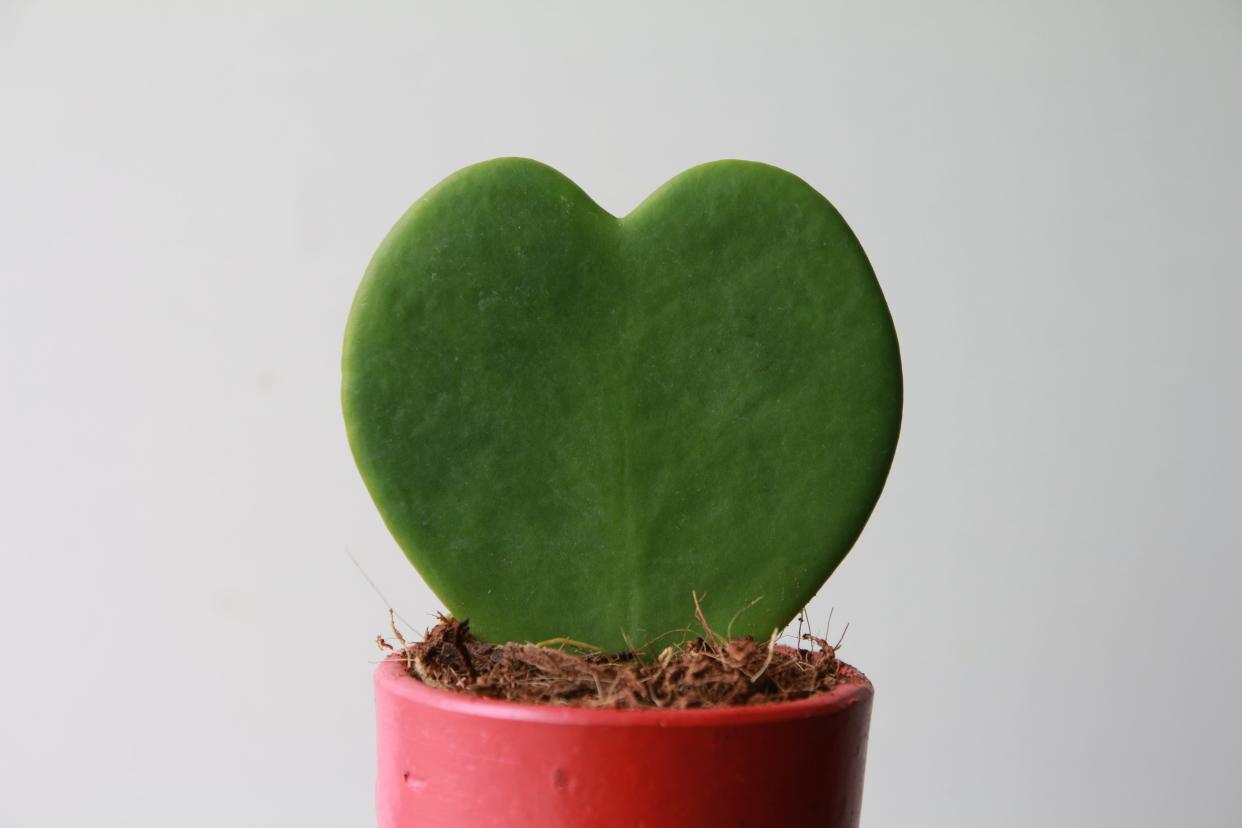One leaf can say 'I love you'

Valentine’s Day: Chocolate and roses are traditional, though a single red rose can also speak volumes. But how about one measly leaf? Actually, if that leaf is from the sweetheart hoya, it’s OK. Sweetheart hoya (Hoya kerria) has — in just a few years — become an extremely popular Valentine’s Day gift. And while I’ve railed against bestowing potted plants as gifts, a sweetheart hoya leaf is only a sort-of plant.
That’s because a 4-to-5-inch, fleshy, heart-shaped leaf of this Hoya will, when stuck in potting soil, form roots but nothing else — ever. It will remain a single leaf for years — lasting longer, perhaps, than the love affair it once celebrated.
The sweetheart hoya vine — one of 200 to 300 species and hybrids of these semi-succulent creepers and twining vines — is native to Southeast Asia. I don’t know if all Hoyas have foliage that behaves the same way, but it certainly seems unusual. Numerous succulents — including Kalanchoes, Echeverias, Sansevierias and Haworthias — can grow into full plants from leaf cuttings, as can most Begonias. If all Hoyas can survive as stand-alone leaves, it would create impressive specimens: The leaves of Hoya coriaceae, for example, can grow 2 feet tall.
Caring for a sweetheart hoya leaf — aka Valentine plant — is simple. Bright, indirect light and judicious watering will do the trick, though a container with a drainage hole should be provided. Irrigations every three or four weeks will probably suffice. A general rule for succulents is to allow the soil to nearly dry out between waterings. Fertilizer, if you decide to use any, should be sparing and infrequent because there’s no growth to encourage: just one leaf to keep green. Perhaps a single drop — not a dropperful — of Schultz Cactus Plus in irrigation water every six months would be appropriate.
If you’re wondering just how long a sweetheart hoya leaf can sustain itself, so am I. Most are probably doomed to short lives due to lack of the minimal care they demand. I’m guessing that well-treated specimens might live longer than many houseplants, which is marvelous — especially when you realize they’ll never need pruning or repotting. Hoyas, in general, do well in screened porches but should be brought indoors during extremely cold weather. Single-leaved sweetheart hoyas, as well as actual plants of this and other Hoya species, are available online.
Charles Reynolds, a Winter Haven resident, has an associate’s degree in horticulture and is a member of Garden Writers Association of America. He can be reached at ballroom16@aol. com
This article originally appeared on The Ledger: Hoya leaf can last years

